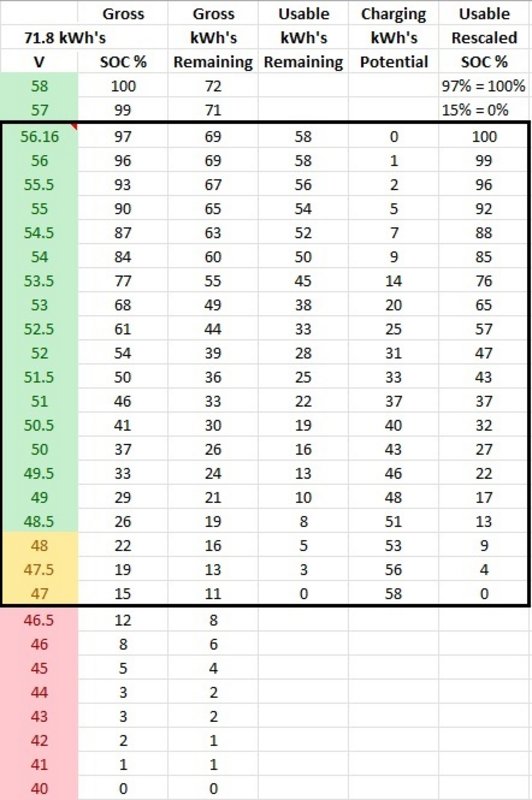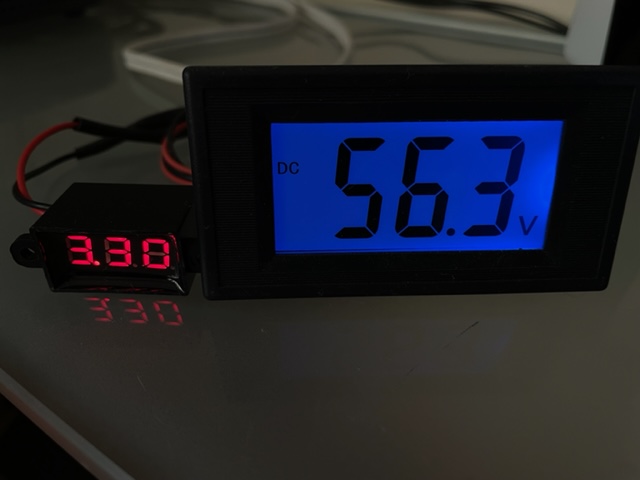cycling_mike wrote: ↑Wed Jan 24, 2024 6:23 pm
The discharge limit is 40v, that seems OK
40v = 2.5v per cell - The absolute minimum you should ever take an LFP cell down to, if you can increase to 3v or 3.1v (48-49.6V) your batteries will last longer, there's also very little capacity in that small lower voltage knee.
*Edit - Just to clarify, is that your charge settings or BMS settings - it's fine for the battery BMS but not ideal for charge settings, same for the voltages I mention below.
cycling_mike wrote: ↑Wed Jan 24, 2024 6:23 pm
At the time of writing my three batteries are discharging and showing
SOC 61.1% 52.9v
SOC 62.9% 52.9v
SOC 64.7% 52.9v
do these look in balance?
That's just how the batteries are 'balanced' to each other and shows their SOC algorithms accuracy or lack of (But could be a sign of weaker cells in the lower two) , but not how the individual battery cells are balanced to each other in the individual batteries, which you can only see in the upper voltage knee when charging above 3.42v per cell. Can you see cell level readings? What is the deviation in voltage of the cells when they are close or at 100%? It should be less than 30mV difference between the lowest and highest cells if they are well balanced.
If you're leaving 10% SOC then that should be OK, but running them really hard everyday down to 2.5v per cell would definitely lower the SOH more quickly, and if they are also charging up to 2.65v per cell that will also help wear them out more quickly. It seems general consensus for longevity is charging up to 3.45-3.50v per cell with the appropriate tail current, or absorption time to get the same outcome, all assuming they are LFP not NMC, liPO or something else.
If you can log in online or connect to a laptop to get more info somehow, it's probably a good idea.

